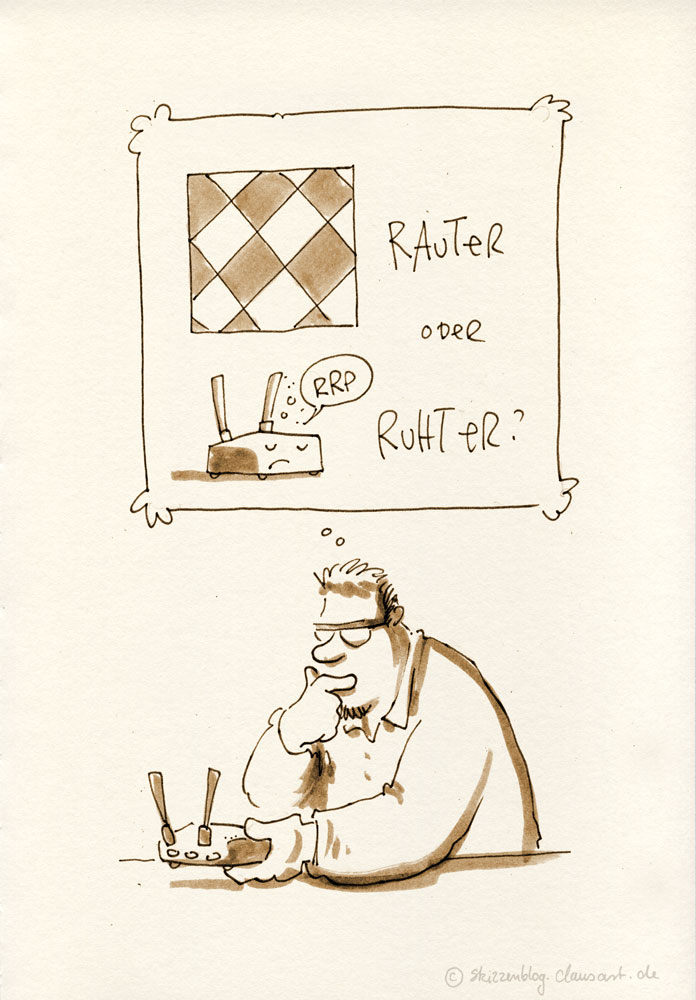Gerätenamen 2.0
skizzenblogSpässle Einsame Berufe, Elektrisches, Fiese Utensilien, Gebogene Wörter, Gerät, Gescheitertes
| Cookie | Dauer | Beschreibung |
|---|---|---|
| cookielawinfo-checkbox-analytics | 11 months | This cookie is set by GDPR Cookie Consent plugin. The cookie is used to store the user consent for the cookies in the category "Analytics". |
| cookielawinfo-checkbox-functional | 11 months | The cookie is set by GDPR cookie consent to record the user consent for the cookies in the category "Functional". |
| cookielawinfo-checkbox-necessary | 11 months | This cookie is set by GDPR Cookie Consent plugin. The cookies is used to store the user consent for the cookies in the category "Necessary". |
| cookielawinfo-checkbox-others | 11 months | This cookie is set by GDPR Cookie Consent plugin. The cookie is used to store the user consent for the cookies in the category "Other. |
| cookielawinfo-checkbox-performance | 11 months | This cookie is set by GDPR Cookie Consent plugin. The cookie is used to store the user consent for the cookies in the category "Performance". |
| viewed_cookie_policy | 11 months | The cookie is set by the GDPR Cookie Consent plugin and is used to store whether or not user has consented to the use of cookies. It does not store any personal data. |


16. März 2016 @ 13:29
Also mein Router ist ein „Ruhter“ – dabei ruht’r nur selten.
16. März 2016 @ 20:46
Die Antwort ist ein eindeutiges „Es kommt drauf an“ 😉 Der Begriff „router“ geht im Fall des Netzwerkgeräts auf das Verb „to route“ zurück. Das wiederum kann man aussprechen als „to ruht“ oder als „to raut“.
Ab hier wird’s dann unklar: Manche sagen, im britischen Englisch verwende man nur „to ruht“, im amerikanischen Englisch beide Varianten. Andere sagen, im AE verwende man nur „to ruht“ und im BE beides.
Hinzu kommt, dass „router“ auch ein Gerät sein kann, mit dem man im Garten verstopfte oder zugewachsene Rohrleitungen wieder frei fräst. In diesem Fall kommt der Name nicht von „to route“, sondern von „to rout“ (herumwühlen, übertragen auch jemanden aufstöbern, jemanden in die Flucht schlagen). Ich habe schon die Auffassung gehört, das Kästchen auf dem Schreibtisch sei ein „ruhter“, während das Ding im Geräteschuppen ein „rauter“ sei.
Andererseits habe ich ebenfalls schon die Auffassung gehört, das Netzwerkgerät sei ein „rauter“, weil es ja kein „rooter“ ist (der Begriff „root“ spielt in der IT eine wichtige Rolle).
Zusammengefasst kommen wir zum Ergebnis: Hat einer mal ’ne Münze? Kopf ist „ruhter“, Zahl ist „rauter“ 😀
16. März 2016 @ 22:30
Dankeschön…
ich denk, ich bleib bei Guter Ruhter.